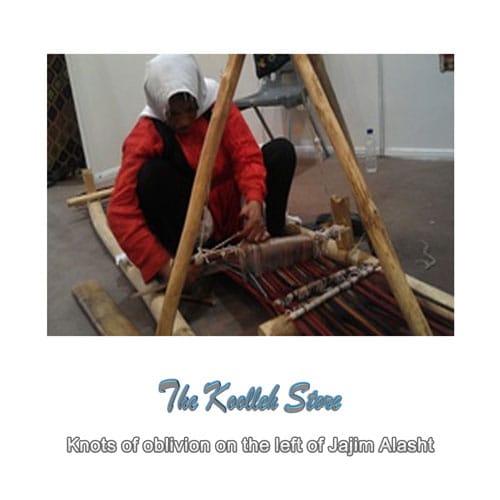Knots of oblivion on the left of Jajim Alasht

He tied the thread in the fabric of his existence and the most beautiful patterns were created with his beautiful fingers, patterns and drawings that each shout the existence of the Creator.
For 25 years, his life has been tied to the fabric to say that art belongs to Iranians and that’s it! In order to preserve the original art of Mazandaran, but it seems that these days, with every knot that perpetuates the role on the dark fabric, the color of oblivion appears more than ever in this industry.
Jajim is a handmade underlay made of thick fabric and it is woven from colorful and delicate yarns of wool or cotton or a mixture of the two.
Jajim weaving has flourished in Mazandaran since ancient times and this art has been world famous in Alasht of Savadkuh city, but in the era of industry and technology, this beautiful industry which is part of Mazandaran heritage is being forgotten and disappearing.
Nasrin Alizadeh, a 25-year-old artist from Jajim Baf Savadkoohi, has been weaving threads and fabrics with great skill to create beautiful patterns. Jajim has been one of the native arts of Alasht since ancient times. And the people here are no strangers to this industry, but the farther we go from the past, the less this industry survives.
He pointed out:Currently, supply and demand have decreased and it is less possible to find a market for this type of product.
The artist added: Alasht used to be the cradle of Jajim industry and women here had special skills in weaving it, but now many weaving workshops have been closed due to lack of funds and now 3 or 4 people are working in weaving at home.
Alizadeh pointed out: Simple weaving or lattiar and metakazin is one of the famous examples of Alasht jajims.
He explained: Jajim maps are in the form of stripes and come in seven colors: red, brown, orange, green, black, white and blue, which are very beautiful, bright and vivid.
Jajim weaving instructor reminded: Jajim is woven both through woolen yarn and fabric and with cotton yarn and woolen weft and has applications such as underlay, back, rug, blanket and chair cover.
Alizadeh, noting that the designs on Jajim are without a map and are drawn mentally, said: This industry can become one of the important souvenirs of Savadkuh city to flourish again and the wheels of knitting machines will start spinning again.
He added: Providing facilities for the artists of this industry to participate in international exhibitions, providing market sales, granting bank facilities to the artists of this industry for reopening weaving workshops, giving skill cards and insurance to the artists and trainees of this industry can forget the reviver of this industry. has been.
By combining cultural heritage and handicrafts, Jajim’s exports lost their boom
Reza Daneshzadeh, director of cultural heritage and tourism of Savadkuh, also considered Jajim Alasht as one of the most important handicrafts of Savadkuh city and said: Once these products were exported to countries such as Germany, Italy, Indonesia, Malaysia, Philippines and Arab countries of the Persian Gulf, but by combining heritage Cultural and handicraft exports of these industries lost their prosperity.
He specified: after the combination of the Cultural Heritage and Handicrafts Organization, the commercial sector was eliminated and the training of handicraft artists was expanded in the city.
Daneshzadeh said: The only problem of this forgetting industry today is the lack of a permanent sales market, so that the artists of this industry can have support to continue their activities.
The head of cultural heritage and handicrafts of Savadkuh city stated: The launch of handicraft markets, which is one of the important programs for the growth of this industry, will take place in the not too distant future, which can partially resolve the marketing debate for the sale of these products.
Daneshzadeh said: The most important souvenir of Savadkuh city in Nowruz Bazaar this year is the colorful and textured jajimas of Savadkuh women artists, which we hope will be well received by these handicrafts.
Regarding the provision of insurance and skill cards to handicraft artists, he pointed out: According to the organizational instructions, any artist who has at least 2 years of work experience, after completing training and gaining experimental skills, must pass a special practical test that after obtaining The passing score in this test is issued by the identification card or the skill card and this card is one of the important requirements for the insurance of handicraft artists and any artist who goes through this process is covered by the insurance.
The attractions of Mazandaran are not only the sea and the forest, handicrafts woven and made with the fabric of the people of this region can be a lucrative attraction for the people of Mazandaran if a little attention and planning is done in this field.

